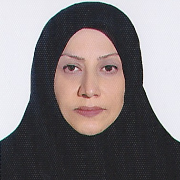Keywords
Dear Editor,
Winter sports" refer to athletic activities that take place in cold or snowy weather, such as skiing and ice hockey, which are popular in certain regions and often require specialized equipment. Consequently, some researchers suggest that the health and performance of athletes engaged in winter sports should be evaluated (1). There have been several studies examining the effects of climate change on winter sports, such as Orr's research on organized sports (2) and Gatterer's investigation of the impact of cold environments on the body (3). Gatterer et al. note that exposure to cold temperatures can affect cardiovascular capacity, metabolic function, neuromuscular performance, and psychological factors, including cognition, motivation, and pain tolerance. Therefore, exercise recommendations for cold weather can vary depending on the type of activity, the environment, and factors such as clothing choices, skin care, and strategies for coping with the cold (3). According to the doctrine of ancient medicine, appropriate physical activity and exercise have long been recognized as significant factors for promoting a healthy lifestyle. Avicenna (980 - 1037) believed that appropriate physical activity and exercise play the most important role in maintaining and improving adult health (4). He also explained how regular exercise can prevent diseases (5). To derive maximum benefits from exercise, it is essential to choose an exercise that is suitable for one's individual needs. In Persian medicine, age, gender, temperament, body type, and health condition are all considered individual determining criteria. Additionally, environmental conditions, including the season, should be taken into account (6). According to Persian medicine, there are at least four recommendations to improve the healthy lifestyle of non-athletic individuals in relation to exercising during winter:
(A) Exercising More in Winter: As a general rule, exercising in winter is more crucial than in other seasons due to the cold and damp temperament of the season, which can increase susceptibility to certain illnesses. Exercise enhances blood flow and generates pleasant warmth throughout the body, creating a warm and dry temperament that can help protect against these diseases (6). Additionally, exercise has a positive impact on mood, which is another reason why it is necessary during the winter. Jorjani (1040 - 1136) noted that the combination of short daylight hours and cold weather can lead to a depressed mood (7), but exercise can prevent this by creating a sense of exhilaration (6).
(B) Increasing Exercise Volume: During winter, it is advisable to increase the volume of exercise by increasing both the duration and frequency of the workout. This is because longer and more frequent exercise sessions help to create a dry temperament, while increasing the intensity of the workout generates more warmth in the body temperament - both of which are the opposite of the winter temperament (6). For non-athletic individuals, fast walking and jogging are two of the best sports to engage in during the winter (6).
(C) The appropriate time and place for exercise: In winter, the warm hours of the day are the best time for exercising because it reduces the inhibitory effects of cold air. The warm and indoor place in addition to enough and appropriate clothing are recommended as well (6).
(D) Diet: As exercise volume should be increased during winter, the diet should be adjusted accordingly. Some recommended foods include chicken and mutton, along with the use of hot-tempered spices such as cinnamon and cumin. Foods containing milk, flour, honey, and oil are also suitable for this season (6).
In summary, although the term "winter sports" typically refers to recreational activities that may not necessarily be linked to promoting health, the recommendations of ancient medicine regarding exercise in winter are intended to continue individuals' daily exercise routines, adjusted to suit the specific conditions of the season. Consequently, these recommendations are both public and designed to maintain and promote health. It is important to note, however, that these recommendations are theoretical hypotheses that require further qualitative and quantitative study to confirm their effectiveness.
References
-
1.
Sporri J, Stoggl T, Aminian K. Editorial: Health and Performance Assessment in Winter Sports. Front Sports Act Living. 2021;3:628574. [PubMed ID: 33768202]. [PubMed Central ID: PMC7985436]. https://doi.org/10.3389/fspor.2021.628574.
-
2.
Orr M, Inoue Y, Seymour R, Dingle G. Impacts of climate change on organized sport: A scoping review. WIREs Clim Change. 2022;13(3). https://doi.org/10.1002/wcc.760.
-
3.
Gatterer H, Dunnwald T, Turner R, Csapo R, Schobersberger W, Burtscher M, et al. Practicing Sport in Cold Environments: Practical Recommendations to Improve Sport Performance and Reduce Negative Health Outcomes. Int J Environ Res Public Health. 2021;18(18). [PubMed ID: 34574624]. [PubMed Central ID: PMC8471173]. https://doi.org/10.3390/ijerph18189700.
-
4.
Avicenna. [The Canon of medicine]. Al-Alami le-matbooat publisher; 2005. Arabic.
-
5.
Siahpoosh M, Ebadiani M, Shah Hosseini G, Isfahani M, Nasrabadi AN, Dadgostar H. Avicenna the first to describe diseases which may be prevented by exercise. Iran J Public Health. 2012;41(11):98-101. [PubMed ID: 23304683]. [PubMed Central ID: PMC3521893].
-
6.
Siahposh M. [Exercise in Iranian traditional medicine]. Niyakan; 2013. Persian.
-
7.
Jorjani SI. Zakhire Khwarazmshahi. Academy of the Islamic Republic of Iran; 2001. Persian.
